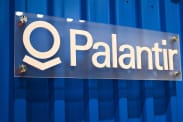With trillions of dollars of real estate-related debt coming due in the near future, commercial mortgage-backed securities (CMBS) are making headlines again. This has raised concerns about whether there’s a looming bubble ready to burst in a 2008-esque market crash. This time the case can be made that the CMBS market looks very different.
We learned a lot more from the 2008 financial crisis than is sometimes realized. Due to the way CMBS deals are structured today, there have not yet been significant losses of principal. While delinquent, foreclosed/REO loans have increased to 3.1% (based on reports by JPMorgan and analytics provider Trepp) from recent lows, they are still far below levels seen during the COVID pandemic.
Although adding all commercial mortgage loans together across sectors creates a daunting maturity wall, there’s roughly $100 billion in office CMBS loans coming due between now and 2026 (according to the CRE Analyst). That’s a manageable number for the market to digest. A high percentage of those loans are also likely to extend at the lower coupons they were struck at, compared to current commercial mortgage rates.
Moreover, leverage at the time of deal underwriting has been far more conservative than the pre-2008 deals, which are often referred to as “CMBS 1.0”. In fact, recent data from CoStar shows there is around a 65% loan-to-total-value in today’s deals, meaning even at these updated levels of net operating income, and assumed lower property valuations, there’s still more than 30% of equity in the average loan in today’s CMBS bond.
So, even within the office segment, where the average valuation decline is commonly expected to be about 30% (Barclays U.S. CMBS Research estimate, GSA CPPI Index), losses at the loan level underlying these deals should be limited. Investment-grade CMBS holders will further be protected by the credit enhancement at the trust level.
In addition, the structure of deals has required more credit enhancement for each ratings tranche than in the pre-Great Financial Crisis (GFC) period to achieve investment grade ratings. In the simplest terms, in order to get to a BBB or single-A rating, the rating agencies require far more cushion for loan losses. For example, many of today’s single-A conduit bonds have more than the 10% loss cushion, which used to garner AAA ratings pre-GFC. The average 2007-era CMBS “AJ” or AAA Jr. bond had a 10% loss cushion.
In many ways the 2008 experience may have been what has saved both CMBS and the securitized credit market from a much more punitive experience through COVID. Pulling the lens back on the sector and looking at occupancy trends there is no doubt that office vacancies increasing to 20% or more in major metropolitan markets is disconcerting. But there have also been “green shoots,” according to recent office data research from JPMorgan. Remote work has begun to decline and more companies are requiring more employees return to the office, at least a couple of days a week.
In retail, there had already been significant rightsizing both before and during COVID, and rent growth of the existing properties is a healthy 3%-4% (based on data from CoStar and JPMorgan). In multifamily housing, rents aren’t increasing at the unsustainable level of the past couple of years, but are still in a healthy low single-digit growth range (according to CoStar and JPMorgan research).
Which brings us back to what CMBS looks like today. There are many pieces of the CMBS “pie” besides office occupancy. The loan collateral backing the CMBS market is diversified across real estate subsectors. About 28% of CMBS conduit loans are comprised of office space. Almost three-quarters of the remaining loans are in other commercial real estate subsectors, for example retail, multifamily, industrial and hospitality, which have rebounded strongly since 2020 and whose fundamental outlooks remain supportive.
Loan performance of all subsectors outside of office have experienced improving delinquency and special servicing percentages since the beginning of 2021. Multifamily and industrial delinquency remain negligible while hotel and retail have seen loan delinquencies decline by 15% and 2%, respectively.
Investing in the CMBS market
While office space is driving headlines and much of the worry, there are many ways to invest in the CMBS market. For example, conduit deals with lower than average office exposure and most of the loans from other commercial real estate subsectors. Another approach is to look at single asset/single borrower deals that are 100% tied to one asset or one borrower, as well as select non-office in other commercial real estate (CRE) subsectors.
Even within the office CRE subsector the story is more nuanced, with the majority of office underperformance concentrated in older, lower-quality office stock. A recent national office study conducted by JLL found that about 90% of office vacancies are concentrated within just 30% of the overall U.S. office inventory. Adding to this point, the newer built (2015-present) U.S. office segment has recorded 103.2 million square feet of positive net absorption since 2019, offsetting negative absorption across all other vintage segments. The bifurcation within the office subsector is creating opportunities across the CMBS market.
There are, of course, elevated risks, as pricing suggests. These begin with the above-average volatility in the asset class and below-average liquidity compared to larger corporate-credit markets. Plus, there can always be losses of principal should the commercial real estate sector take a much deeper decline from already depressed levels. That said, many of those risks are currently priced in.
The CMBS market is often disccussed without talking about prices. In many investment-grade tranches below AAA, the price to enter a transaction is near the lowest level, and with the highest yields, that have ever been available since the 2008 Great Financial Crisis, compared to the lows experienced during the time of the COVID shutdowns.
You don’t have to be bullish to think there’s relative value in a single-A or BBB CMBS asset class at these discounts when they look cheap compared to some of the highest risk sectors of the corporate credit markets. Opportunity and risk is a balance, but the current CMBS credit environment has asymmetric upside compared to downside across markets.
D.J. Lucey is senior managing director, senior portfolio manager, U.S. Total Return Fixed Income at SLC Management. SLC Management is the brand name for the institutional asset management business of Sun Life Financial Inc. This material contains opinions of the author, but not necessarily those of SLC Management or its affiliates.
Plus: The $1 trillion ‘wall of worry’ for commercial real estate that spirals through 2027
More: Fed no longer foresees a U.S. recession — and other things we learned from Powell’s press conference






